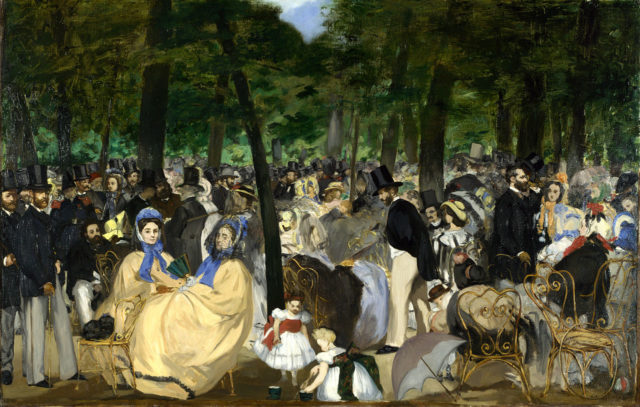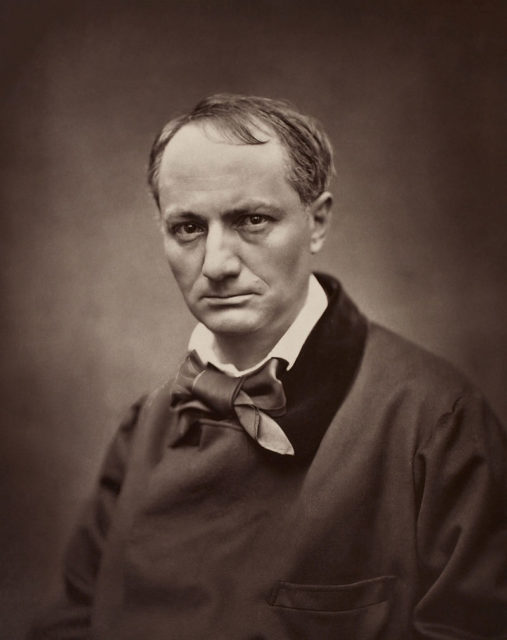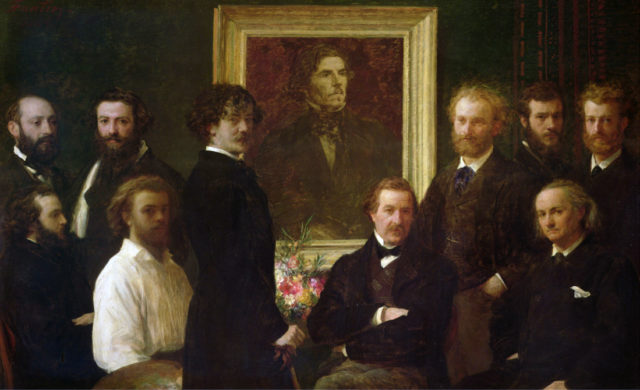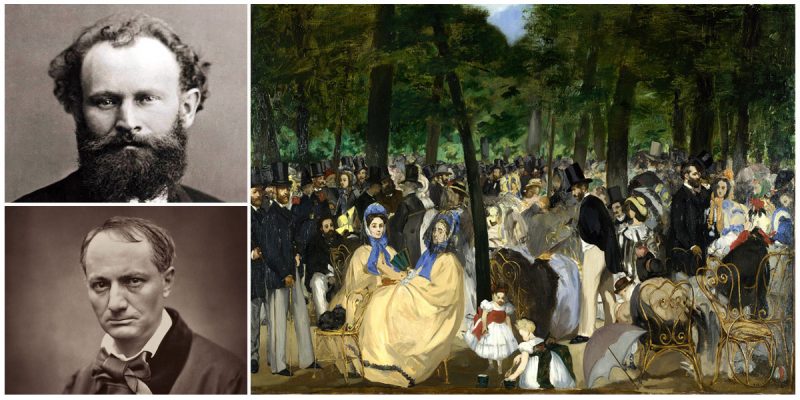The French painter Édouard Manet is a 19th-century artist who was one of the first artists who painted modern life. He was a leading artist in the transition from Realism to Impressionism who depicted scenes of everyday life.
In his life, Manet painted 420 paintings and created a reputation that defined him as a brilliant and influential artist.

One of his most popular paintings and his first major work considering the common life motif is Music in the Tuileries which depicts wealthy Parisians at their leisure time. Inspired by the painters Diego Velázques and Frans Hals, this painting is an early example of his painterly style.
The atmosphere of the painting shows how the Tuileries gardens looked at that time. In the painting, Manet included several of his friends, authors, artists, and musicians, and a self-portrait.

He depicted himself on the far left and next to him is the portrait of the painter Albert de Balleroy. On the right site the sculptor Zacharie Astric is pictured and the composer Jacques Offenbach, who sits against a tree. On the right side of the center, in the foreground, is the portrait of Manet’s brother, Eugéne Manet. Standing against a tree in the brown suit is the portrait of Théophile Gautier and on his left side is the poet Charles Baudelaire.

One of his best companions was the French poet Charles Baudelaire. Their points of view were the same, considering modern life as heroic enough to be depicted in paintings and literature. Baudelaire developed and refined this idea in his essay “The Painter of Modern Life” from 1863 which is considered to be a manifesto of this outlook.
Before Manet painted Music in the Tuileries, he and his friend often went to the Tuileries Gardens, where Manet completed numerous sketches. Baudelaire always encouraged his friend to follow his path and ignore the criticism, because in the 1860s urban scenes were not considered a subject matter of high Art.

The painting currently is in the National Gallery in London, owned by the National Gallery and The Hugh Lane, Dublin. In 1883, Manet sold it to the opera singer Jean-Baptiste Faure, and in 1898 it was sold to the dealer Durand-Ruel. In 1903, the painting was sold again to the collector Sir Hugh Lane, and after his death in 1915, the painting was left to the Dublin City Gallery known as The Hugh Lane.
There was a misunderstanding about Lane’s will, and in 1917 it was decided that Lane’s previous will had left the painting to the National Gallery in London. In the end, the two galleries made a deal to share the 39 paintings owned by Hugh Lane.
